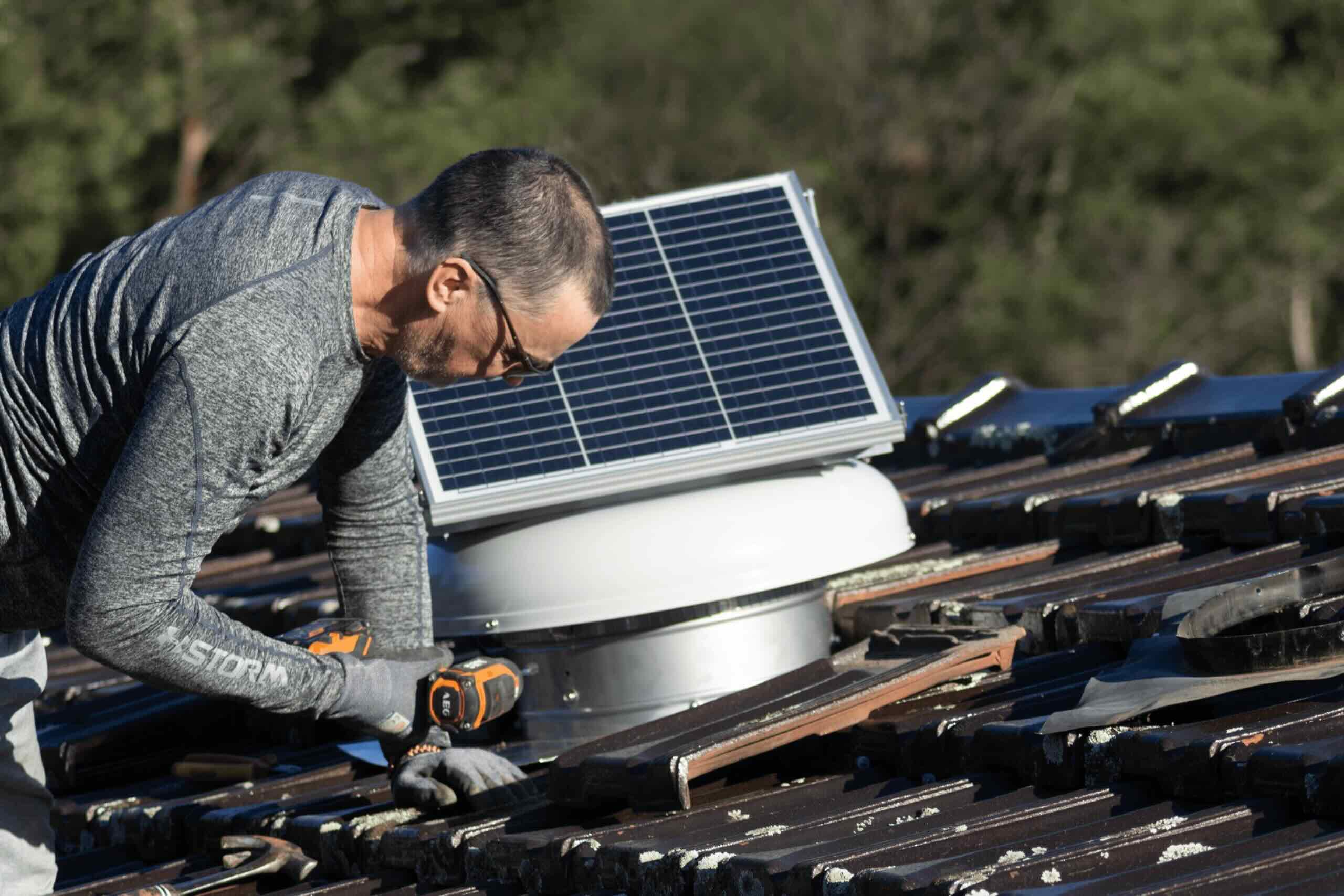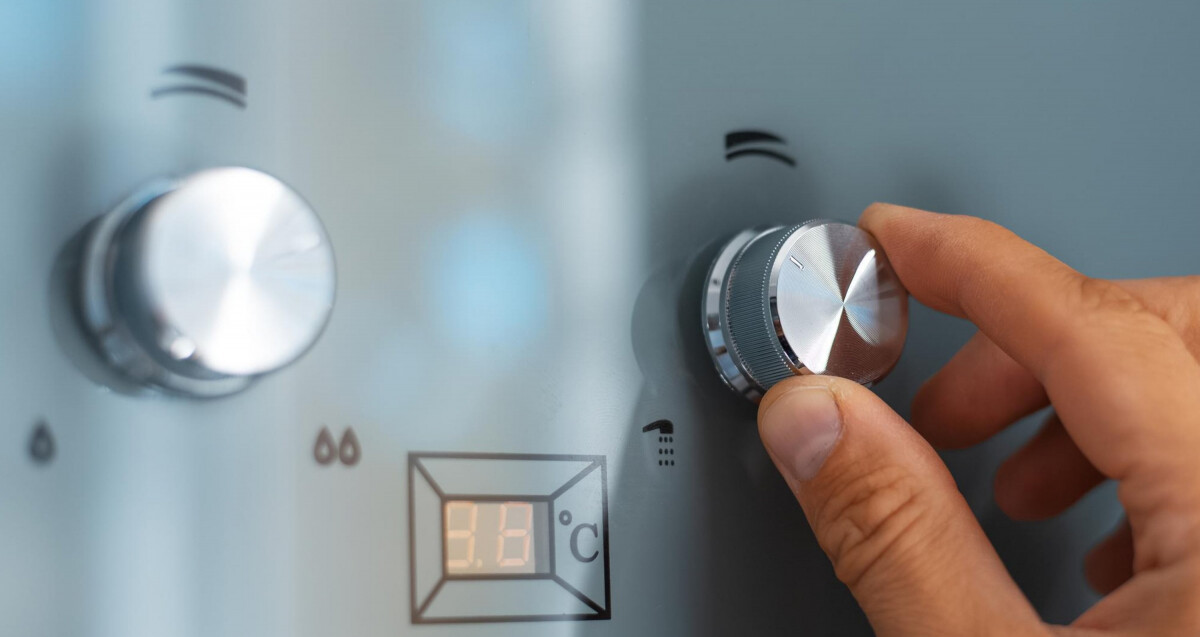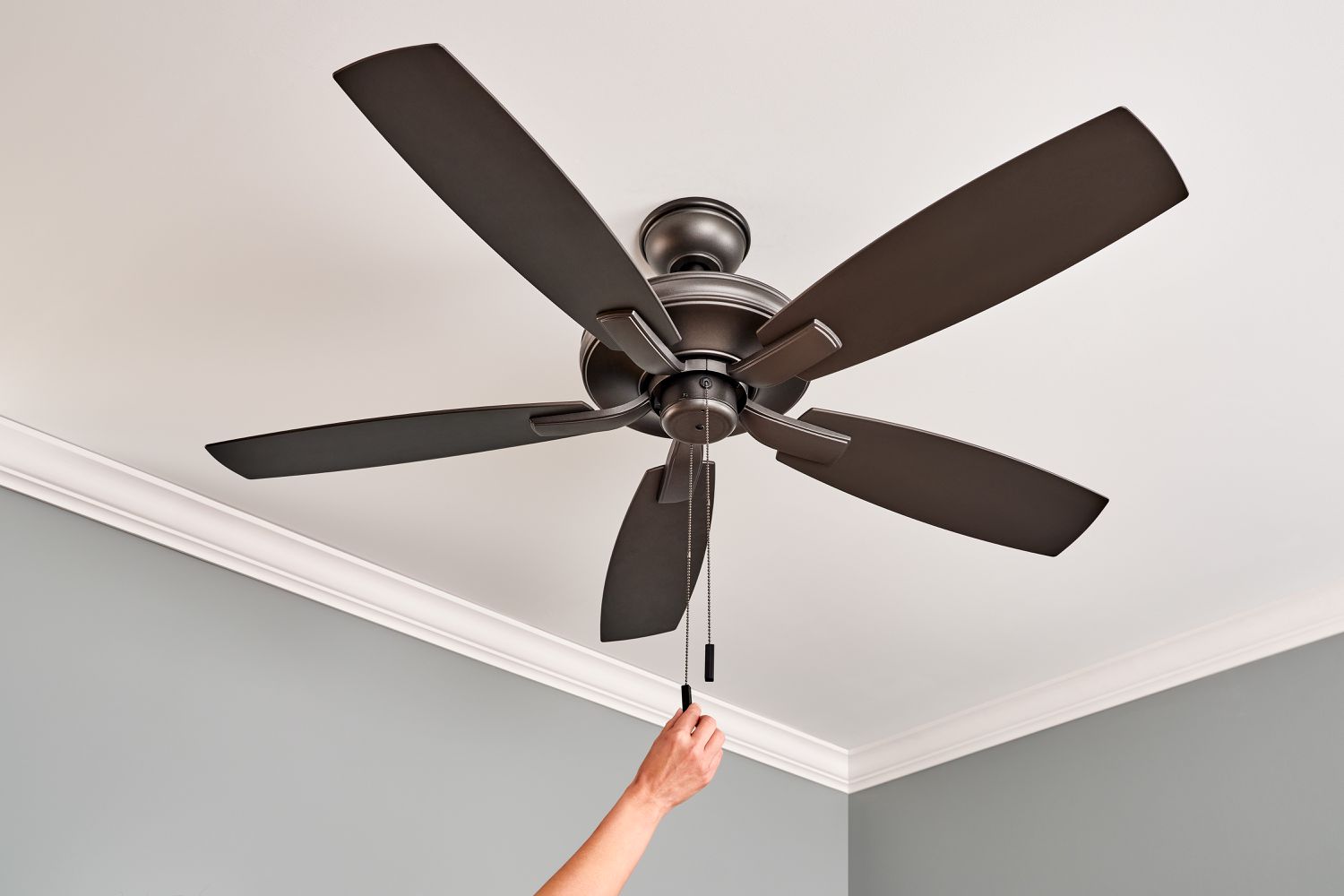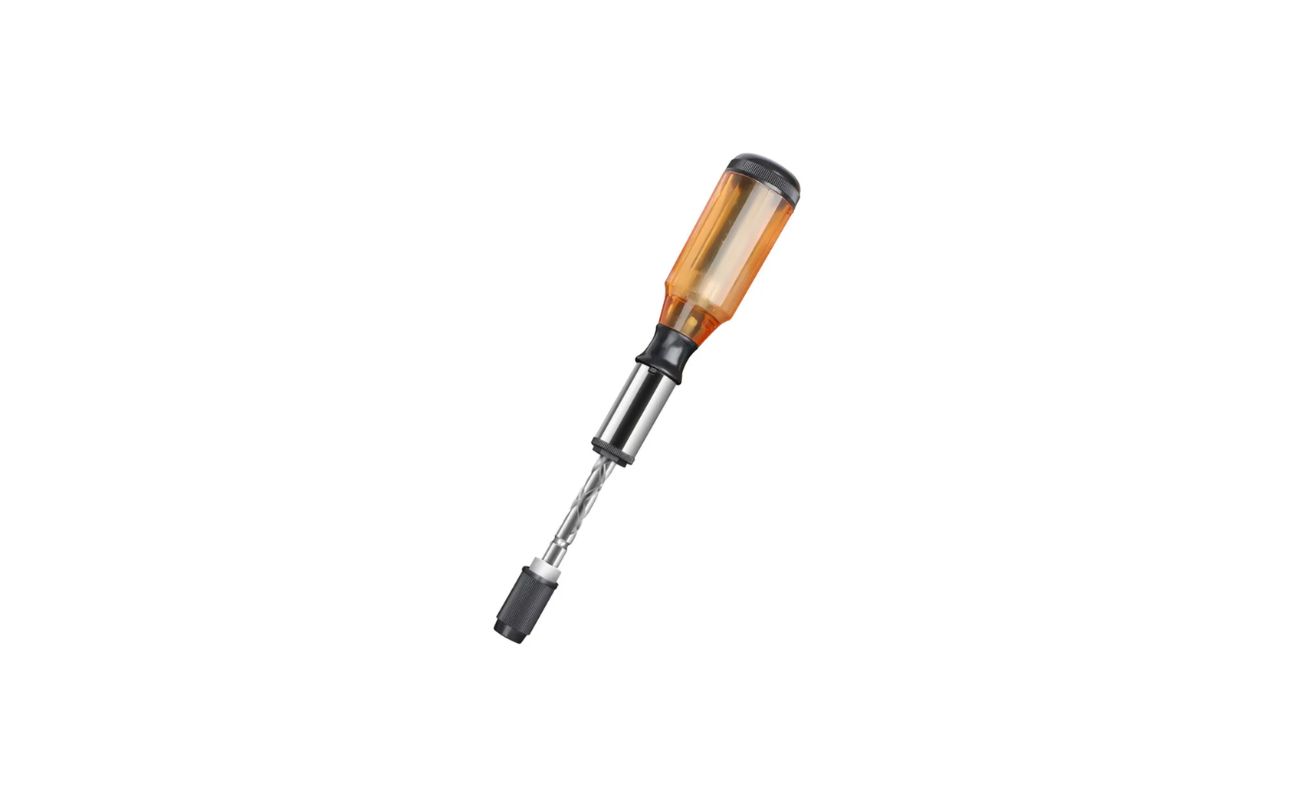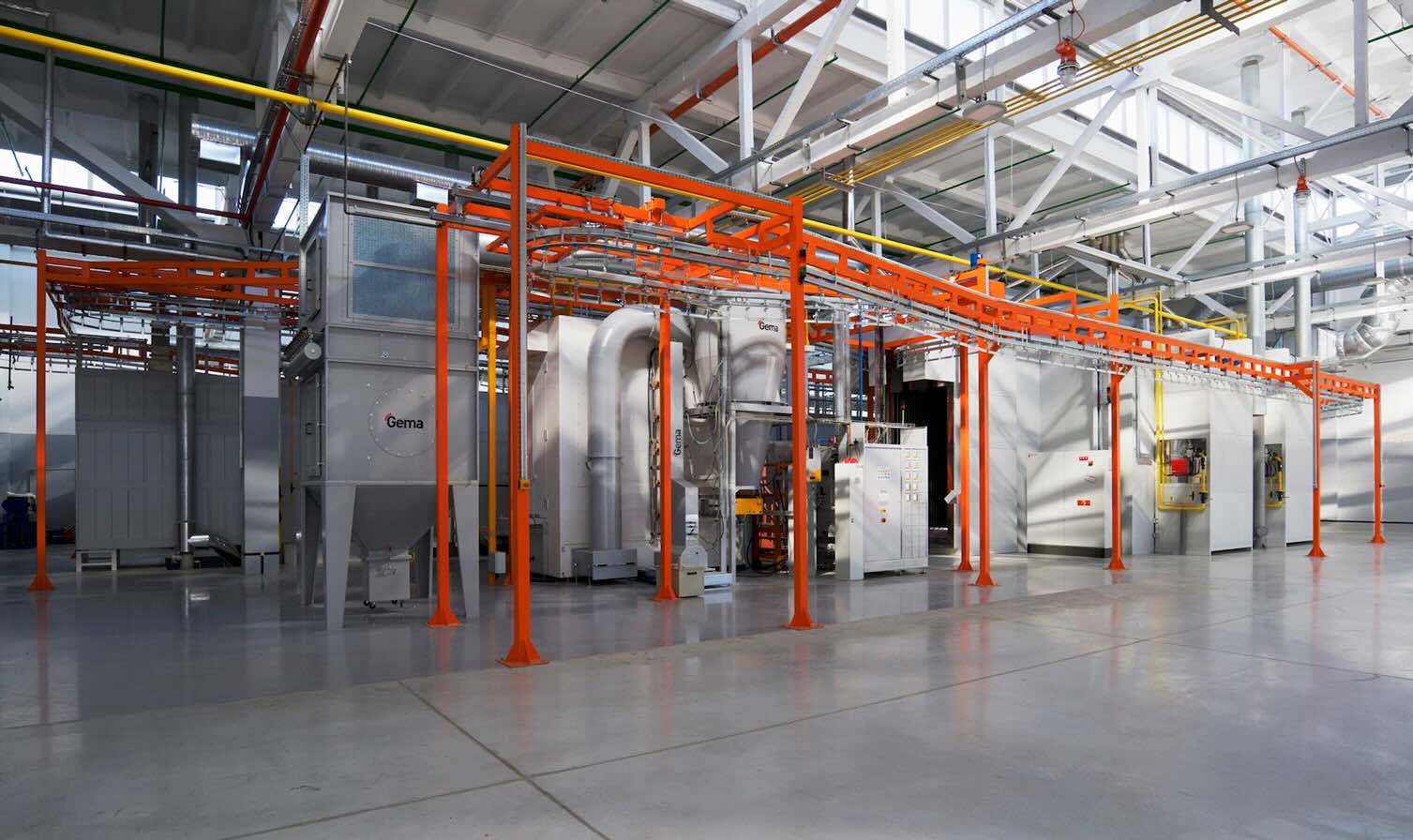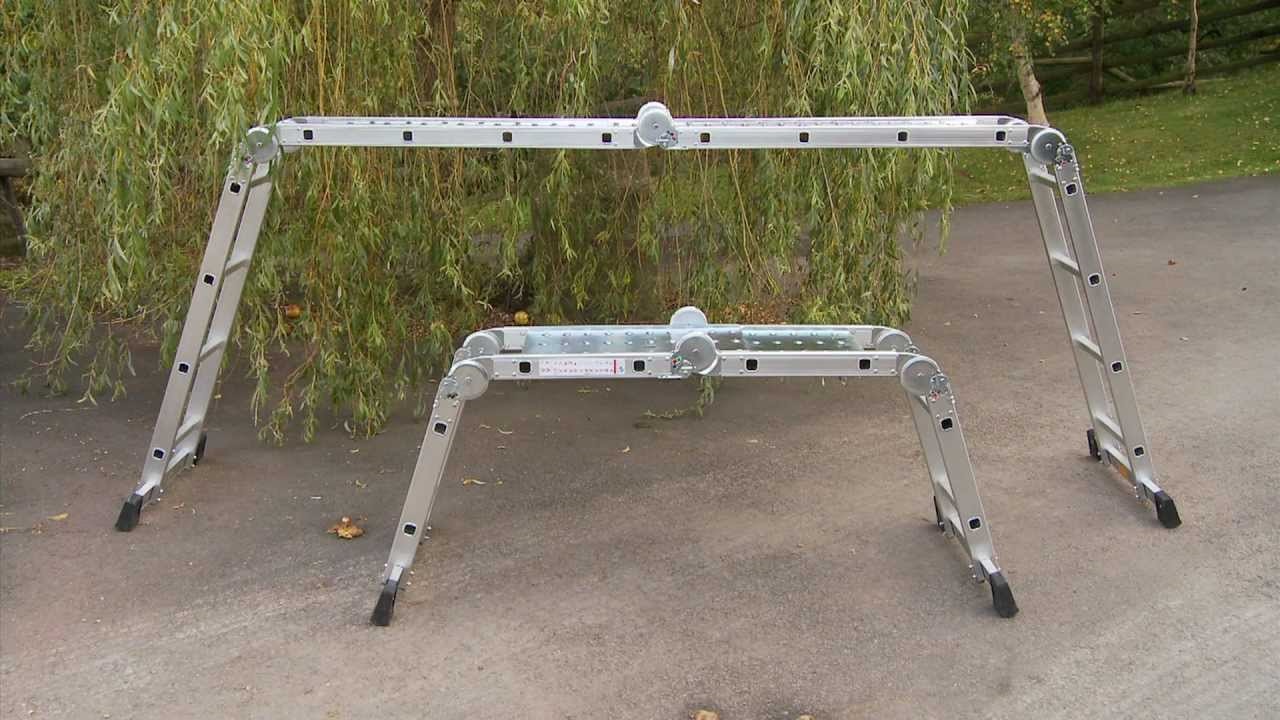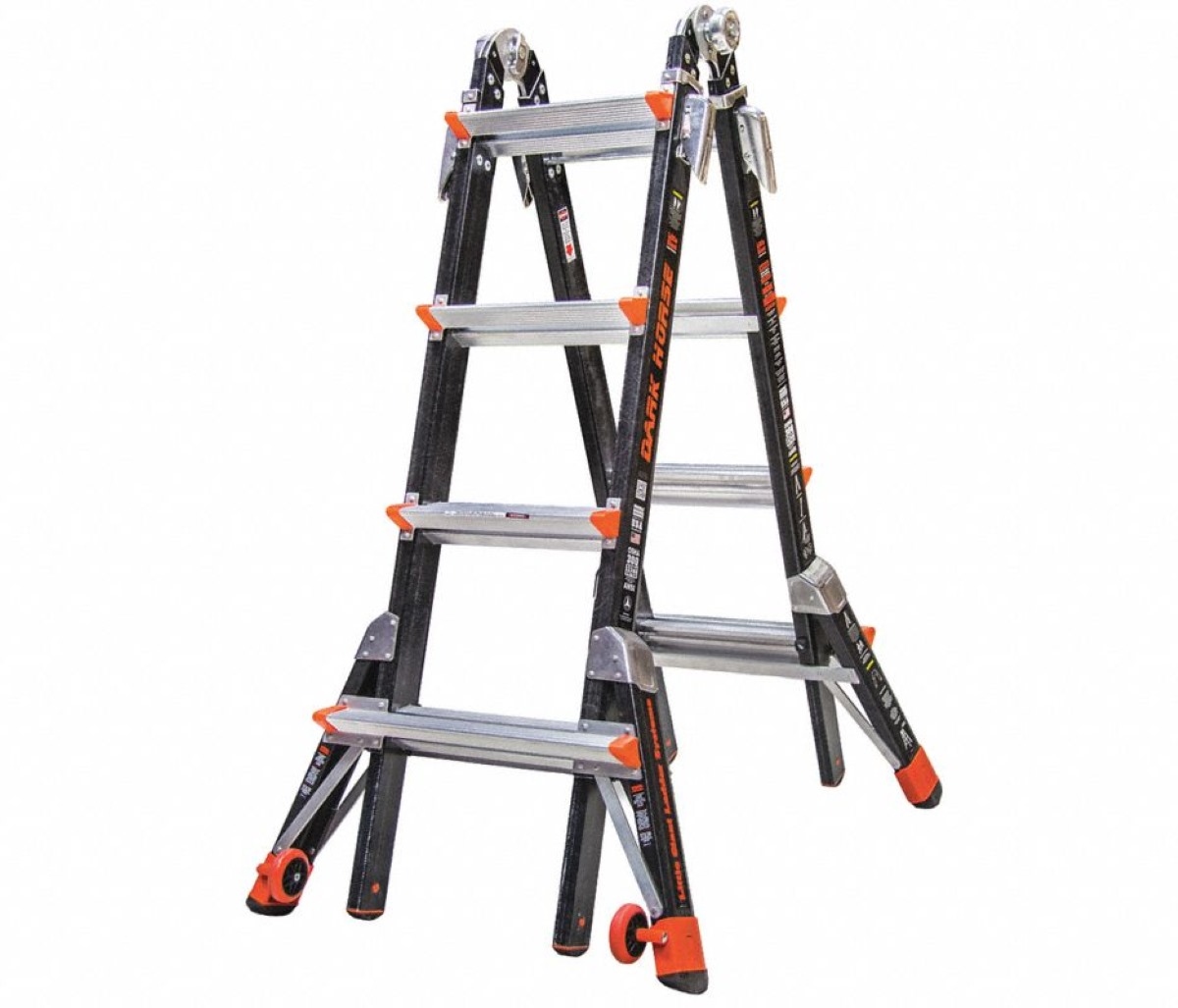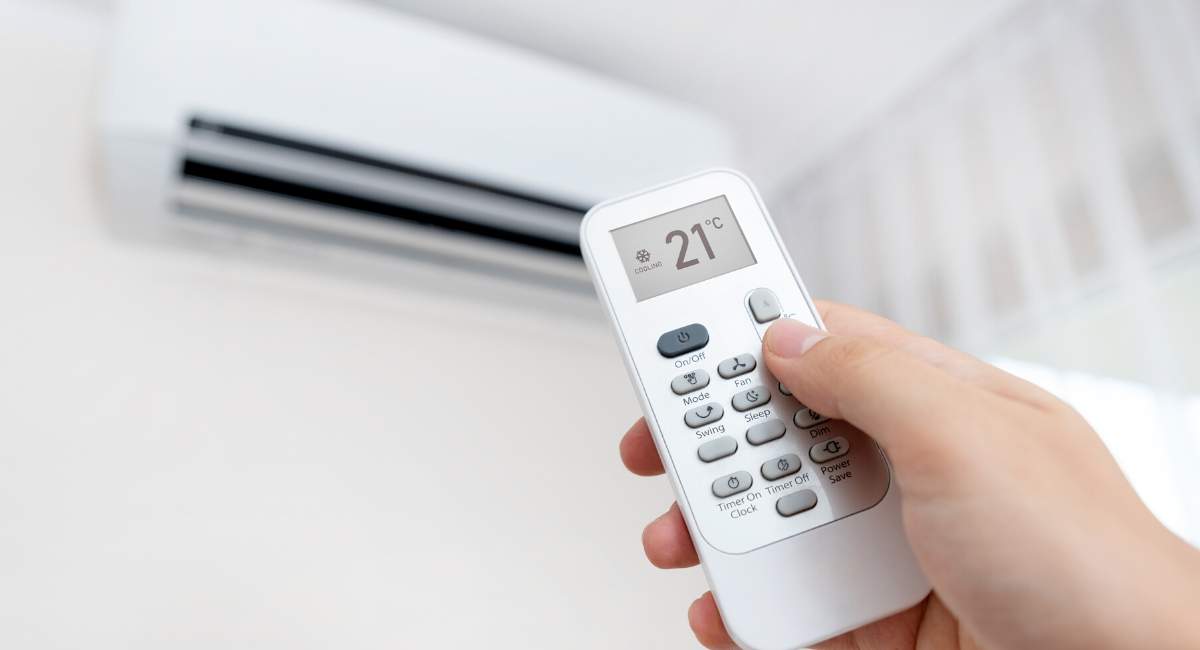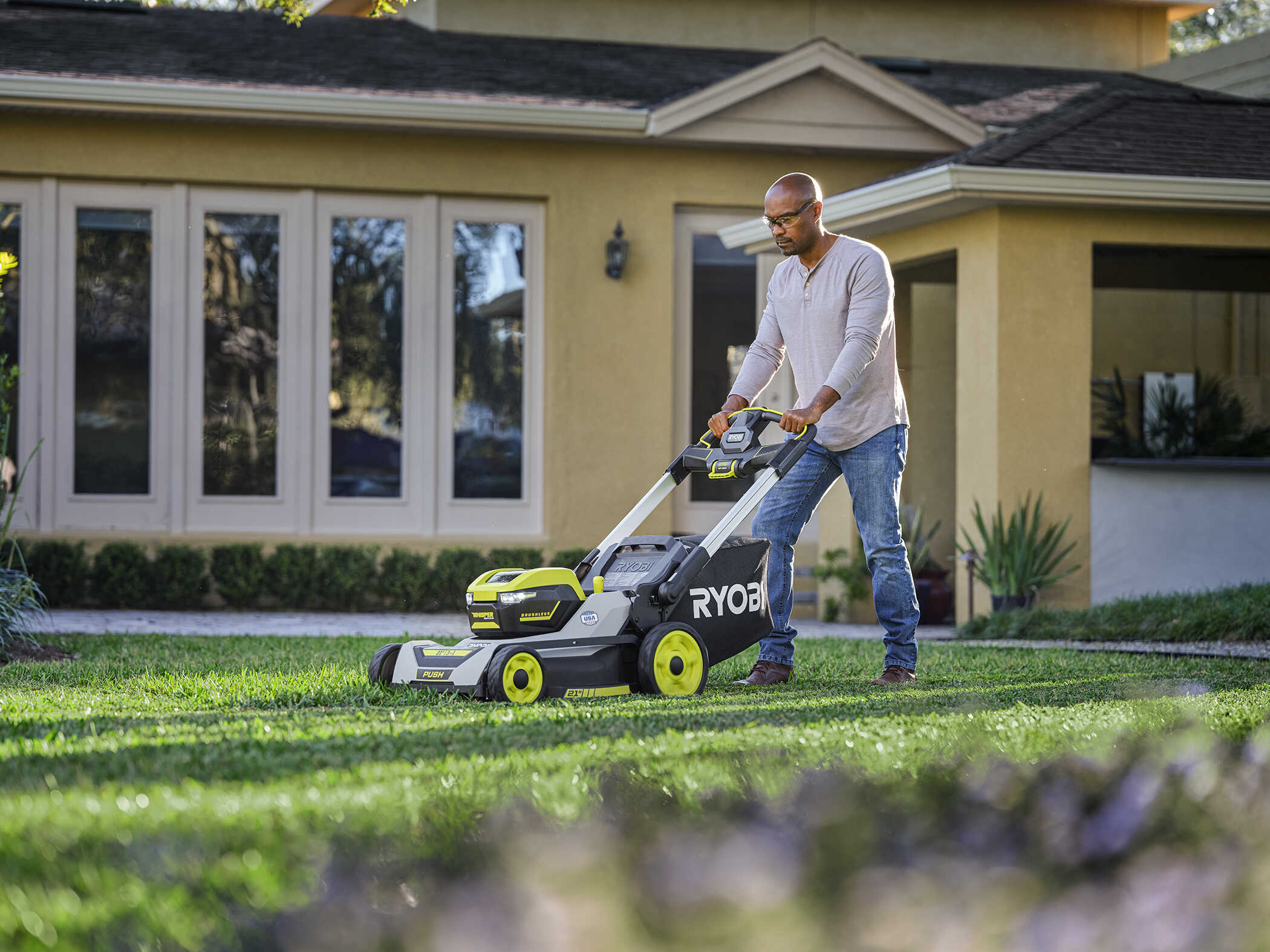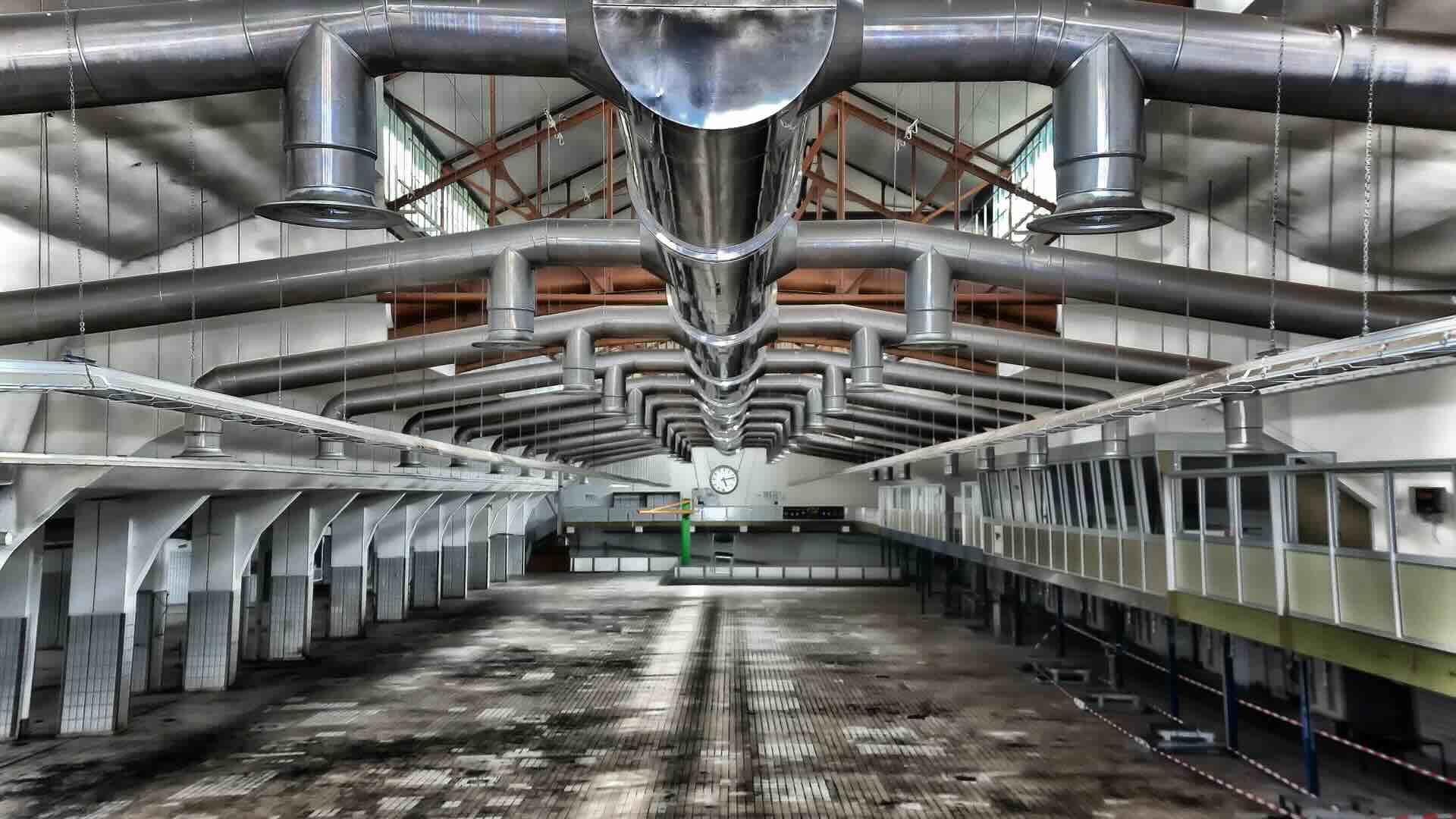Home>Home Maintenance>When Should You Turn Air Conditioning On
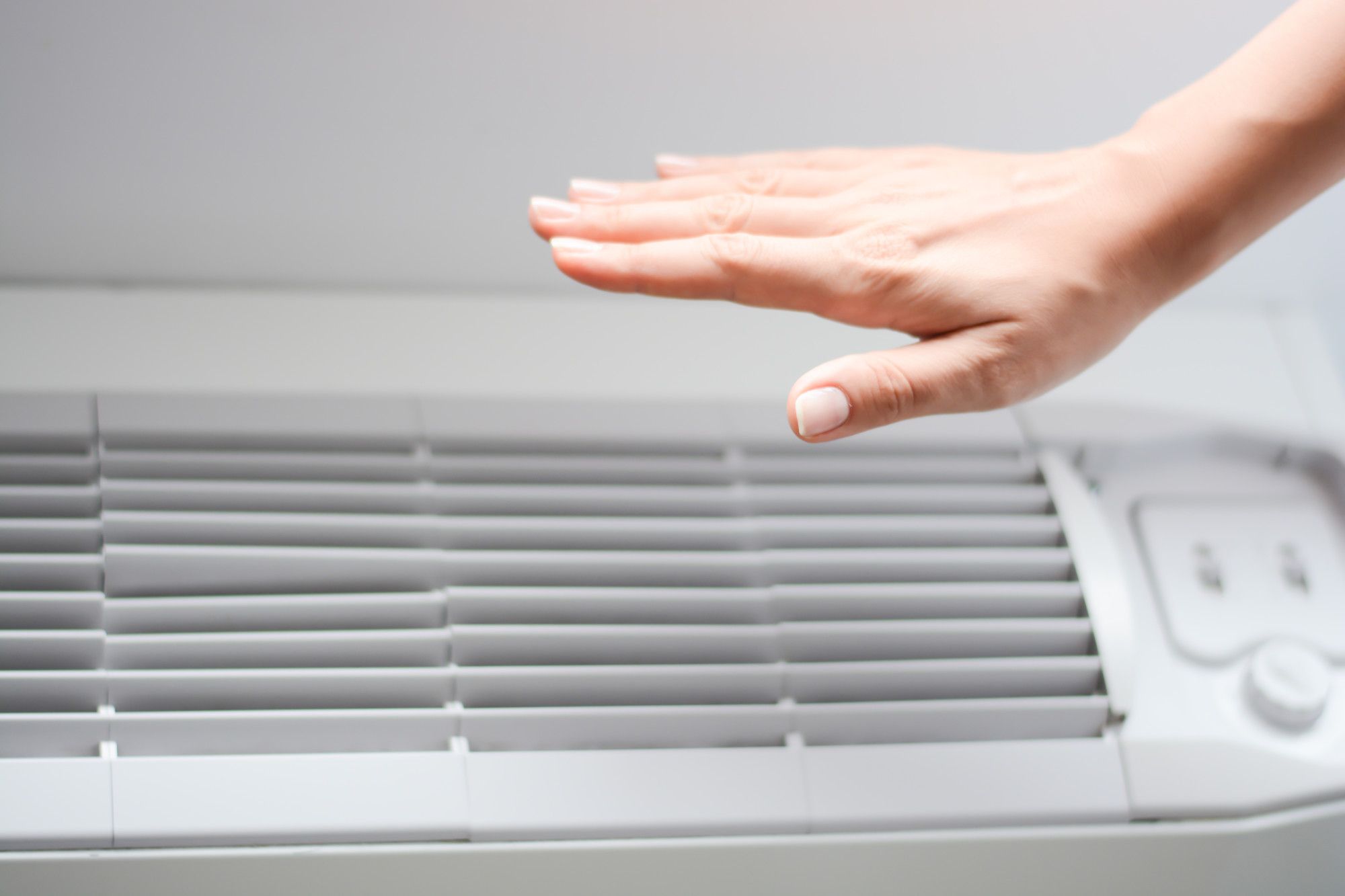

Home Maintenance
When Should You Turn Air Conditioning On
Modified: March 6, 2024
Learn the best time to turn on your air conditioning with this helpful guide on home maintenance. Keep your home comfortable all year round.
(Many of the links in this article redirect to a specific reviewed product. Your purchase of these products through affiliate links helps to generate commission for Storables.com, at no extra cost. Learn more)
Introduction
Welcome to the world of home maintenance! Whether you’re a seasoned homeowner or just starting out on the exciting journey of owning your own property, one thing is for certain: maintaining a comfortable and pleasant living environment is essential. And when it comes to climate control, air conditioning plays a crucial role.
In this comprehensive guide, we will explore the factors to consider before turning your air conditioning on, the ideal temperature for different situations, the recommended time to start using your air conditioning, energy-saving tips, and alternative cooling methods. By the end of this article, you’ll have the knowledge and confidence to optimize the usage of your air conditioning system while keeping your energy bills in check.
So let’s dive in and discover when you should turn your air conditioning on!
Key Takeaways:
- Timing is crucial when turning on your air conditioning. Consider factors like outdoor temperature, indoor comfort, and energy costs to make informed decisions and optimize usage.
- Explore alternative cooling methods like natural ventilation, fans, and window coverings to stay comfortable while conserving energy and reducing your carbon footprint.
Factors to Consider Before Turning Air Conditioning On
Before you flip the switch on your air conditioning unit, there are a few important factors to consider. Taking the time to assess these factors will not only ensure the optimal performance of your AC system but also contribute to your overall comfort and energy efficiency.
Outdoor Temperature: The temperature outside plays a significant role in determining whether you should turn on your air conditioning. If the outdoor temperature is mild and comfortable, you might want to consider opening windows or using natural ventilation instead of relying on your AC.
Indoor Temperature: Gauge the temperature inside your home. If it’s already cool and comfortable, there may be no need to resort to air conditioning just yet. Utilizing ceiling fans or portable fans can help circulate air and create a pleasant ambiance without the need for AC.
Humidity Level: High humidity can make even moderate temperatures feel unbearable. If the humidity inside your home is high, turning on the air conditioning can help regulate both temperature and humidity levels, enhancing your comfort.
Pollen and Allergens: If you or your family members suffer from allergies, you may want to consider turning on your air conditioning earlier to filter out pollen and other allergens from the indoor air. Air conditioning units with built-in air filters can help improve indoor air quality.
Energy Costs: It’s important to consider the impact of using your air conditioning on your energy bills. Running your AC excessively can lead to higher energy costs. Therefore, it’s advisable to weigh the benefits of air conditioning against the potential increase in your utility expenses.
Insulation: Check your home’s insulation to ensure it is properly sealed. Good insulation can help retain cool air inside your home, reducing the load on your air conditioning system and promoting energy efficiency.
Health Considerations: If you or your family members have respiratory issues, turning on the air conditioning can help maintain a clean and controlled indoor environment, free from dust, pollutants, and excessive humidity.
By carefully considering these factors, you can make an informed decision about when to turn on your air conditioning system, maximizing comfort and energy efficiency in your home.
Ideal Temperature for Different Situations
Setting the right temperature on your air conditioning unit is essential for creating a comfortable living space. However, the ideal temperature can vary depending on the situation and personal preferences. Here are some general guidelines to help you determine the ideal temperature for different scenarios:
Daytime Comfort: During the daytime, a temperature of around 72 to 78 degrees Fahrenheit (22 to 26 degrees Celsius) is often considered comfortable for most individuals. This range provides a balance between keeping the indoor environment cool and minimizing energy consumption.
Nighttime Cooling: When it’s time to sleep, most people prefer a slightly lower temperature to promote better sleep quality. Setting the thermostat to around 65 to 70 degrees Fahrenheit (18 to 21 degrees Celsius) can create a cool and soothing atmosphere for a restful night’s sleep.
Cooling Efficiency: If you’re concerned about energy efficiency, aim to keep your home’s temperature as close to the outdoor temperature as possible. This can help minimize the workload on your air conditioning unit and reduce energy consumption.
Unoccupied Times: When no one is home, it’s a good practice to increase the temperature on your thermostat. Adjusting the temperature to about 80 degrees Fahrenheit (27 degrees Celsius) or higher can help conserve energy while still preventing excessive heat buildup.
Personal Preference: Ultimately, the ideal temperature is subjective and depends on personal preference. Some individuals may prefer cooler environments, while others are more comfortable in slightly warmer conditions. Experiment to find the temperature that suits you best.
Remember, it’s important to strike a balance between comfort and energy efficiency when setting the temperature on your air conditioning unit. Adjusting the temperature according to different situations can help optimize your cooling experience and save on energy costs.
Recommended Time to Turn Air Conditioning On
Deciding when to turn your air conditioning on can have a significant impact on your comfort and energy usage. Here are some recommended times to consider:
Early Morning: During the early morning hours, the temperature is typically cooler, especially during the summer months. Take advantage of this natural cooling by opening windows and allowing fresh air to circulate throughout your home. If the outdoor temperature starts to rise, you can consider turning on your air conditioning to maintain a comfortable indoor environment.
Mid-Morning: As the day progresses and temperatures begin to rise, it may be a good time to start using your air conditioning. Turning it on during mid-morning allows your AC unit to pre-cool your home before the temperature reaches its peak. This can help keep your living space consistently comfortable throughout the day.
Hot Afternoon: During the hottest part of the day, typically in the early to mid-afternoon, it’s important to have your air conditioning running to combat the intense heat. Set the temperature to a comfortable level and let your AC system keep you cool and relaxed during these scorching hours.
Evening and Night: As the sun sets and temperatures start to drop, you may have the opportunity to give your air conditioning system a break. If the outdoor temperature cools down to a pleasant level, you can consider turning off your AC and relying on natural ventilation or fans. This can help reduce energy consumption and allow for fresh air circulation.
Remember to monitor the indoor temperature and humidity levels to ensure your comfort and well-being. If you notice the indoor environment becoming too hot or humid, it may be necessary to turn on your air conditioning regardless of the time of day.
By following these recommended times, you can strike a balance between staying comfortable and minimizing energy usage. Experiment with different strategies and adjust according to the unique conditions of your home and climate.
It’s best to turn on the air conditioning when the indoor temperature is consistently higher than your comfort level, typically around 78-80°F. This can help maintain a comfortable and healthy living environment.
Energy Saving Tips for Air Conditioning Usage
While air conditioning provides much-needed relief from the heat, it can also contribute to higher energy bills. To help you keep your energy consumption in check, here are some valuable tips to save energy while using your air conditioning:
Seal Air Leaks: Make sure your home is properly sealed to prevent cool air from escaping and warm air from entering. Inspect doors, windows, and any other potential openings where air can leak. Use weatherstripping or caulk to seal any gaps or cracks, improving the efficiency of your cooling system.
Upgrade Your Insulation: Inadequate insulation can lead to significant energy loss. Consider adding insulation to your walls, attic, and crawl spaces to create a barrier against heat transfer. This will help your air conditioning unit work more efficiently and reduce the need for frequent cooling.
Use Programmable Thermostats: Install a programmable thermostat to have greater control over your cooling settings. Set it to adjust the temperature based on your schedule, raising the temperature while you’re away and lowering it to your desired comfort level before you return. This way, you save energy when you don’t need cooling.
Maintain Regular Maintenance: Schedule regular maintenance for your air conditioning system to keep it running at its best. Clean or replace filters regularly, as dirty filters can hinder airflow and reduce cooling efficiency. Have a professional inspect your system annually to ensure optimal performance and address any potential issues.
Utilize Ceiling Fans: Ceiling fans can help circulate cool air throughout your home, allowing you to raise the thermostat by a few degrees without sacrificing comfort. This can significantly reduce energy consumption while still keeping you cool.
Create Shade: Use curtains, blinds, or external shading devices to block out direct sunlight. This can reduce the heat gain in your home and lessen the workload on your air conditioning unit. Consider planting trees or installing awnings to provide natural shade for your home as well.
Avoid Cooling Unused Spaces: Close doors and vents in rooms that are not frequently used. This allows you to focus your air conditioning efforts on the areas where you spend the most time, reducing energy waste and increasing efficiency.
Nighttime Cooling Strategies: Take advantage of cool evening temperatures by opening windows and using natural ventilation to cool your home overnight. This can help lower the indoor temperature, reducing the reliance on your air conditioning unit during the day.
By implementing these energy-saving tips, you can enjoy the comfort of air conditioning while minimizing your environmental impact and saving on energy costs.
Alternative Cooling Methods
While air conditioning is an effective way to cool your home, there are alternative methods you can consider to beat the heat and reduce your reliance on AC. These methods can provide comfort while also being energy-efficient and environmentally friendly. Here are some alternative cooling methods to explore:
Natural Ventilation: Open windows and use natural ventilation to let fresh air circulate throughout your home. Positioning windows strategically to create cross-ventilation can help create a cool breeze and maintain a comfortable indoor temperature.
Ceiling Fans and Portable Fans: Installing ceiling fans or using portable fans can help circulate air and create a breeze, providing a cooling effect in your home. Using fans in conjunction with open windows can enhance natural ventilation and make the indoor environment more comfortable.
Window Coverings: Use curtains, blinds, or shades to block out direct sunlight and limit heat gain. Reflective or light-colored window coverings can help prevent heat from entering your home, keeping it cooler naturally.
Cooling Clothing and Bedding: Opt for lightweight, breathable clothing made from natural fibers, such as cotton or linen. Consider using moisture-wicking sheets and bedding that can help keep you cool and comfortable during warm nights.
Insulated Window Films: Applying window films to your windows can reduce heat transfer and minimize the amount of external heat that enters your home. These films reflect sunlight and help keep your indoor space cooler.
Shade and Outdoor Structures: Create shade around your home by planting trees or installing awnings, pergolas, or shade sails. These structures can block direct sunlight and reduce heat absorption, keeping your home cooler naturally.
Cooling Mists and Evaporative Cooling: Use misting fans or evaporative cooling systems to create a refreshing mist in outdoor areas or on porches. Evaporative coolers work by passing air through moist pads, lowering the temperature in the process.
Cooling with Water: Use water to cool down yourself and your surroundings. Take cool showers or baths, use damp towels on your body, or place a bowl of ice or a wet cloth in front of a fan to create a cooling effect.
Smart Home Technology: Consider investing in smart home devices that allow you to control your cooling settings remotely. This way, you can turn on your air conditioning or adjust other cooling methods before you arrive home, ensuring a comfortable environment without running the AC unnecessarily.
Proper Hydration: Staying hydrated is essential to regulate your body temperature and stay cool. Drink plenty of water throughout the day, and consider consuming hydrating foods such as fruits and vegetables.
By incorporating these alternative cooling methods into your routine, you can reduce your reliance on air conditioning and create a comfortable living environment while saving energy and reducing your carbon footprint.
Conclusion
When it comes to turning on your air conditioning, timing is everything. By considering the factors discussed in this guide, such as outdoor temperature, indoor comfort, humidity levels, and energy costs, you can make an informed decision about when to start using your AC system. Additionally, identifying the ideal temperature for different situations and implementing energy-saving tips can help you optimize your air conditioning usage while reducing energy consumption.
Remember, air conditioning is just one of many options for keeping cool. Exploring alternative cooling methods, such as natural ventilation, fans, window coverings, and smart home technology, can provide comfort while conserving energy and being environmentally friendly. Don’t forget about the importance of proper insulation, regular maintenance, and addressing air leaks to ensure the efficiency of your air conditioning system.
Ultimately, finding the right balance between comfort and energy efficiency is key. Experiment with different cooling strategies and adjust them according to your unique circumstances and personal preferences. By incorporating the tips and techniques discussed in this guide, you can create a comfortable and sustainable living environment while minimizing your impact on the environment and reducing your energy bills.
So, whether it’s deciding when to turn your air conditioning on, exploring alternative cooling methods, or implementing energy-saving practices, you now have the knowledge to make informed choices regarding your home’s climate control. Stay cool and enjoy a comfortable, energy-efficient living space!
Frequently Asked Questions about When Should You Turn Air Conditioning On
Was this page helpful?
At Storables.com, we guarantee accurate and reliable information. Our content, validated by Expert Board Contributors, is crafted following stringent Editorial Policies. We're committed to providing you with well-researched, expert-backed insights for all your informational needs.
